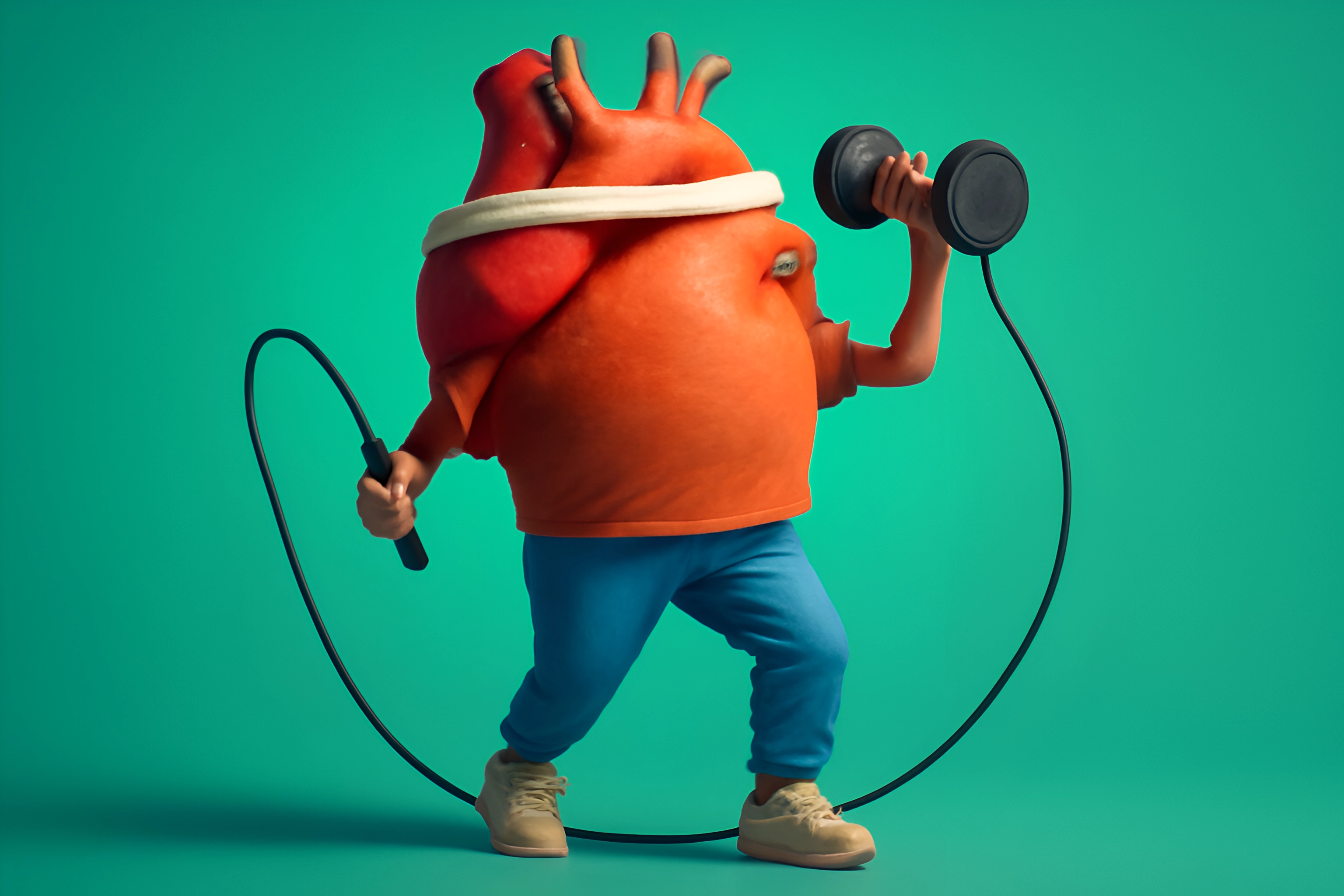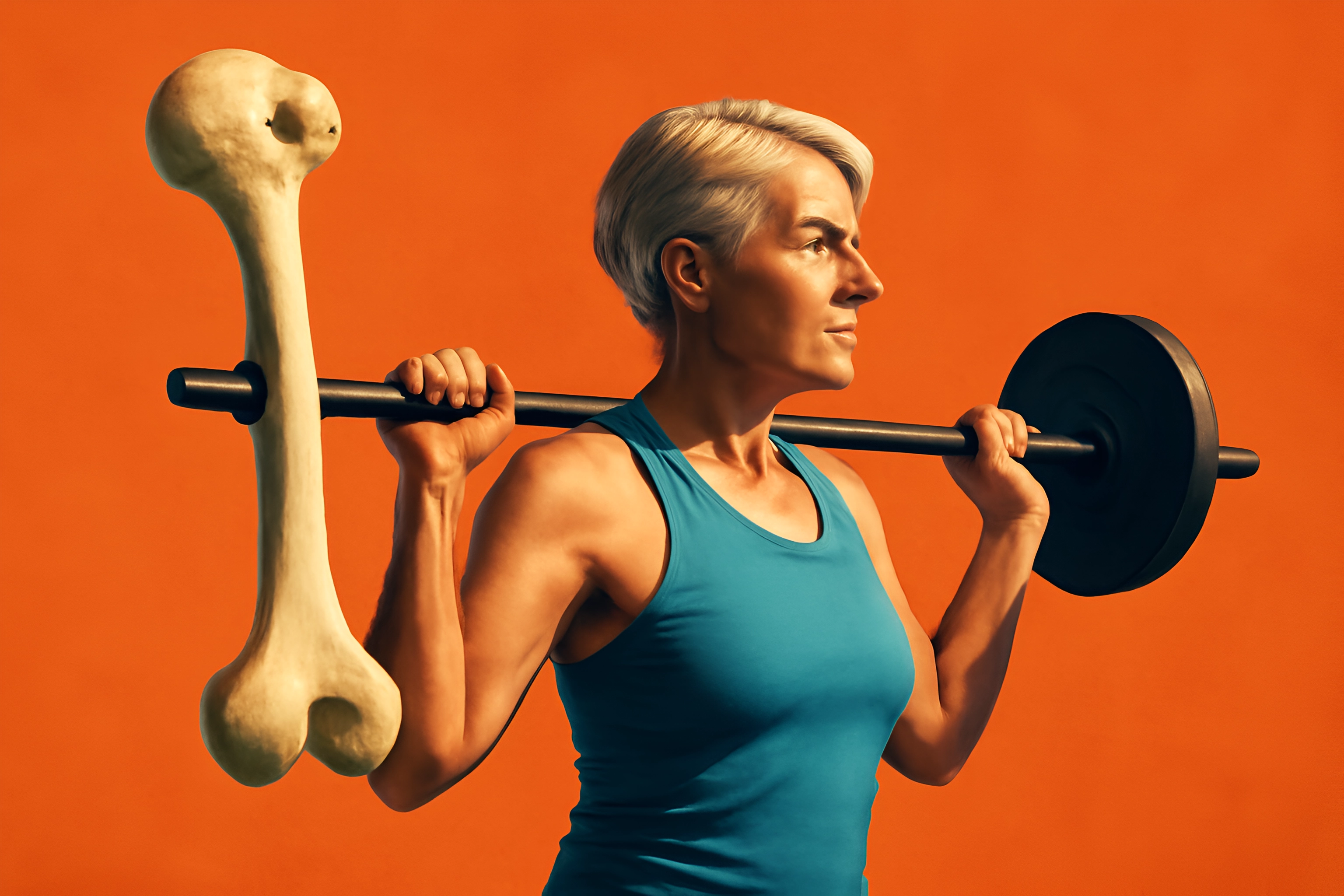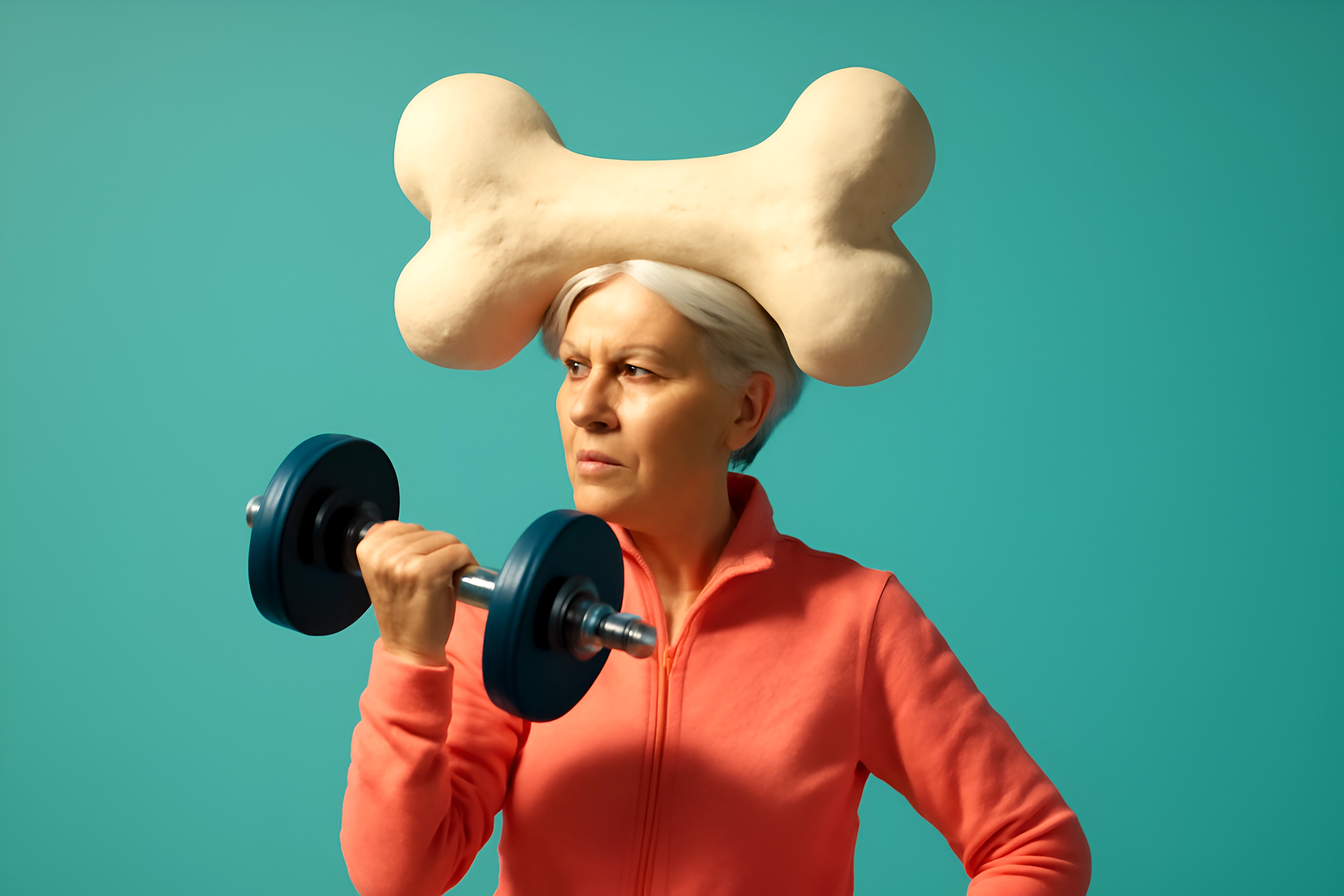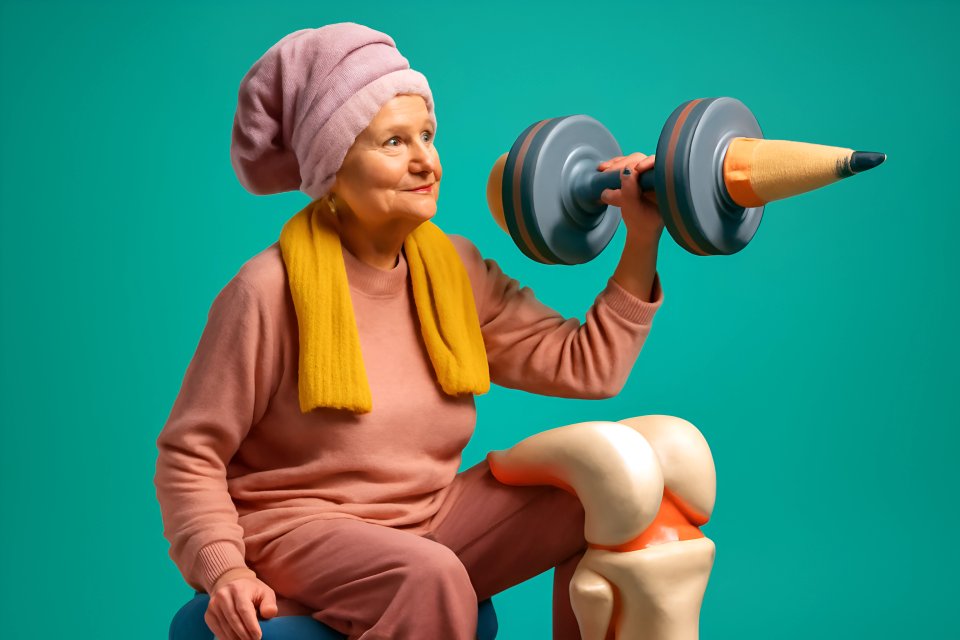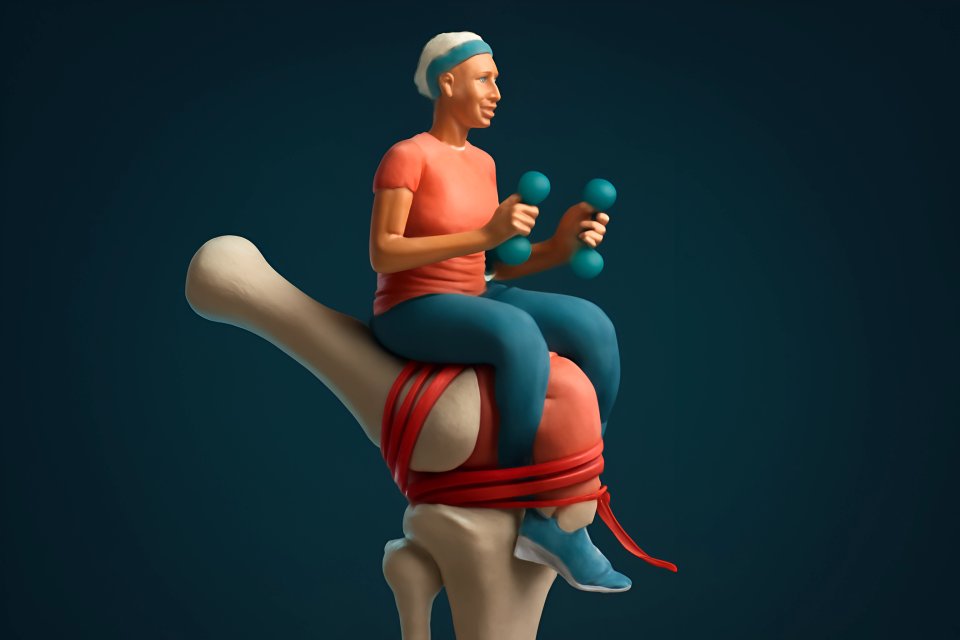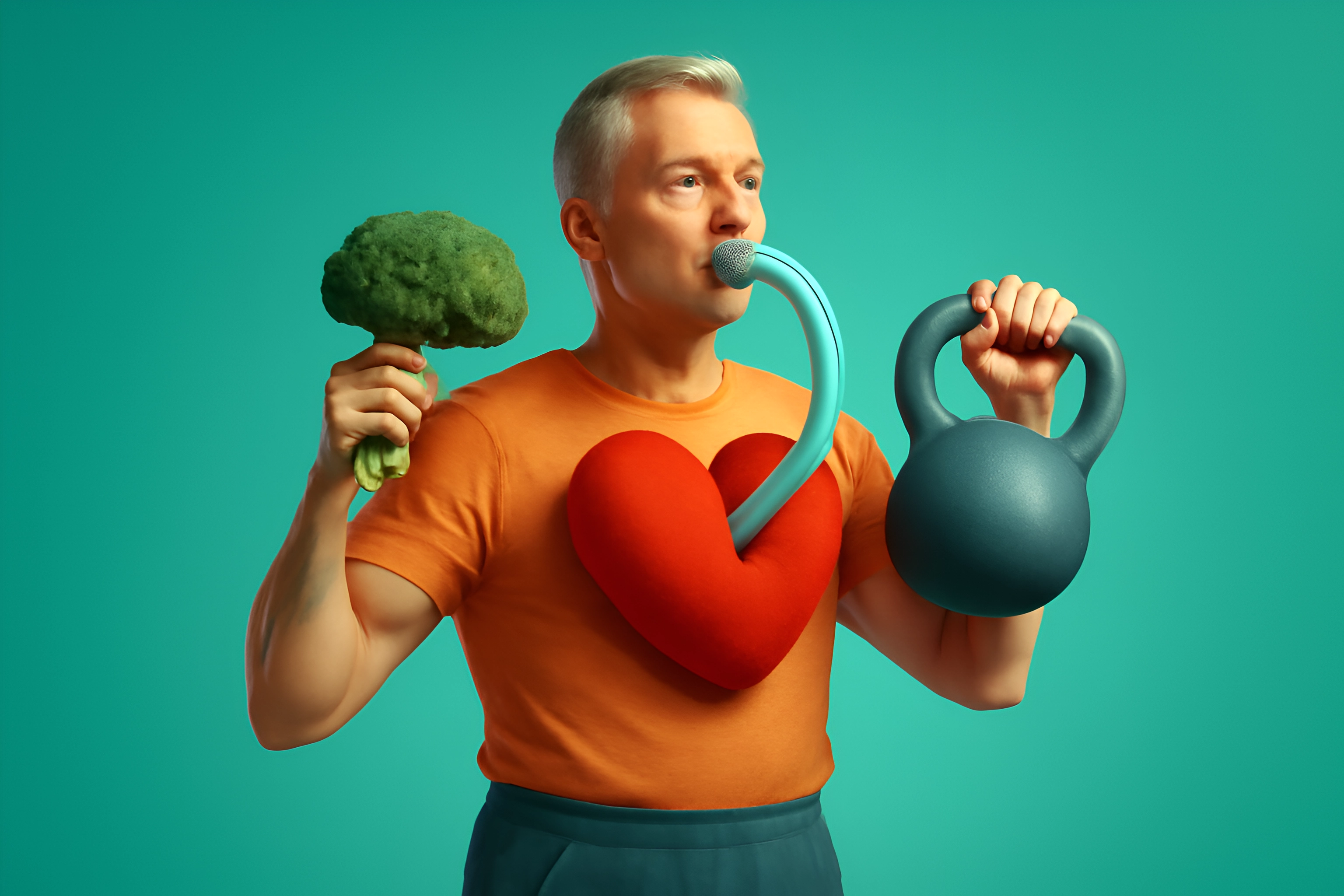
Entering your 50s and beyond is a time of wisdom, freedom, and new adventures. It’s a chapter where you finally have the time to chase long-held dreams, spend quality moments with loved ones, and truly invest in yourself. Ensuring your heart is strong and healthy is the key to enjoying every single one of those moments with the vibrant energy you deserve.
You're here because you understand that. You're thinking about managing blood pressure, keeping cholesterol in check, and maintaining the stamina to live life to the fullest. But the world of health advice can feel overwhelming, complicated, and frankly, a little intimidating.
Forget the extremes and the complicated rules. The truth is, building a resilient heart doesn't require a total life overhaul. This guide will give you a simple, integrated plan built on three powerful pillars: what you eat, how you move, and how you breathe. These are the foundational heart health strategies over 50 that create a sustainable, balanced lifestyle for a long and powerful life.
Pillar 1: Vital Nutrition for a Resilient Heart
The food on your plate is one of the most powerful tools you have for supporting your heart. Every meal is an opportunity to either build your cardiovascular system up or place it under unnecessary strain. Think of your diet not as a restriction, but as the premium fuel your body’s most important muscle needs to thrive.
Making smart, consistent choices is the secret to long-term success. It’s about nourishing your body with whole, vibrant foods that work for you, not against you. This approach to nutrition for heart health seniors is about abundance, not deprivation.
Embrace Heart-Healthy Fats
For decades, we were told that all fat was the enemy. We now know that the type of fat you eat is what truly matters. Your heart thrives on "good" fats, like monounsaturated and polyunsaturated fats, which help reduce bad cholesterol levels and provide anti-inflammatory benefits. The American Heart Association specifically highlights how incorporating heart-healthy fats is a cornerstone of cardiovascular wellness.
The goal is to replace harmful trans fats and excessive saturated fats with these powerful allies. It's a simple swap that pays huge dividends for your arterial health. You can easily do this by incorporating more of these foods into your daily meals:
- Avocados
- Olive oil
- Nuts (almonds, walnuts)
- Seeds (chia, flax)
- Fatty fish (salmon, mackerel)
Focus on Fiber-Rich Foods
Fiber is your heart's unsung hero. Soluble fiber, in particular, acts like a sponge, binding to cholesterol particles and helping to escort them out of your body before they can clog your arteries. A diet rich in fiber also helps you feel full and satisfied, which is crucial for maintaining a healthy weight—another key factor in reducing strain on your heart.
According to experts at Harvard Health, a diet rich in fiber is essential for supporting heart muscle efficiency and overall cardiovascular resilience. You don't need fancy supplements to get enough. Just focus on adding more of these delicious, whole foods to your plate:
- Oats and barley
- Beans and lentils
- Berries and apples
- Broccoli and leafy greens
Be Smart About Sodium
Sodium is sneaky. It hides in processed foods, canned goods, and restaurant meals, and too much of it can lead to high blood pressure, a major risk factor for heart disease and stroke. The challenge is that most of the sodium we consume doesn't come from the salt shaker on our table.
The key is to become a savvy consumer and a creative cook. Start by reading nutrition labels on packaged foods; you might be shocked at the sodium content in things like bread, soups, and sauces. The American Heart Association recommends aiming for less than 1,500 mg of sodium per day for most adults.
Instead of reaching for salt, flavor your meals with a world of other options like herbs, spices, garlic, onion, and citrus. A squeeze of lemon or a dash of smoked paprika can transform a dish without adding a single milligram of sodium. A simple tip is to always rinse canned beans and vegetables to wash away excess salt. For more ideas, explore our guide to Heart-Healthy Superfoods: Nutrient-Rich Recipes and Tips for Seniors.
Pillar 2: Active Fitness for a Stronger Cardiovascular System
Consistent, joyful movement is the best way to keep your heart muscle toned and efficient. Exercise isn't about punishment or pushing yourself to the brink. It's a celebration of what your body can do and a direct investment in your future mobility, strength, and independence.
When you move your body, you're telling your heart that you need it to be strong, and it responds by becoming more powerful with every beat. A balanced approach to exercise for heart health seniors combines different types of movement to build a truly resilient system. This is how you ensure your cardiovascular health for seniors remains a top priority.
The Foundation: Consistent Aerobic Activity
Aerobic exercise, or "cardio," is any activity that gets your heart rate up and improves circulation. This is the most direct way to strengthen your heart muscle. A stronger heart can pump more blood with less effort, which reduces the force on your arteries and helps lower your blood pressure.
Research published by the National Institutes of Health shows that regular aerobic exercise can significantly improve arterial function and reduce stiffness in older adults, effectively turning back the clock on your cardiovascular system. The goal is consistency, not intensity. Aim for at least 30 minutes of moderate activity, five days a week, with low-impact options like these:
- Brisk walking
- Swimming or water aerobics
- Cycling
- Dancing
The Support: Strength Training for Overall Health
A strong body supports a strong heart. While cardio directly trains your heart muscle, strength training builds lean muscle mass throughout your body. Why does this matter? Because muscle is metabolically active, meaning it burns more calories at rest, which helps you maintain a healthy weight and manage blood sugar levels—both of which are critical for heart health.
You don't need to become a bodybuilder. Simple, functional movements are incredibly effective. According to University of Utah Health, incorporating strength training is a key part of a transformative health plan after 50. Start with two to three sessions per week, focusing on exercises like:
- Bodyweight squats to a chair
- Wall push-ups
- Using resistance bands
- Lifting light weights
The Necessity: Flexibility and Balance
What do stretching and balance have to do with your heart? Everything. Flexibility and balance work are what keep you mobile, stable, and injury-free, ensuring you can continue doing the aerobic and strength activities your heart needs. An injury can sideline you for weeks, disrupting the consistency that is so vital for progress.
Activities like yoga, tai chi, and daily stretching improve your range of motion and reduce your risk of falls. As recommended by experts, a well-rounded routine that includes flexibility is crucial for sustainable, age-appropriate fitness. To get started on building a safe and effective routine, check out our detailed guide on How to Build a Low-Impact Exercise Routine Over 50.
Pillar 3: Mindful Breathing to Calm Your Heart and Mind
Your breath is a powerful, built-in tool to manage stress, which has a direct and often underestimated impact on your heart. In our fast-paced world, we often forget about this third, crucial pillar of health. But mastering your breath is one of the simplest and most effective ways to protect your cardiovascular system.
This isn't about complex meditation or spiritual practices, unless you want it to be. It's about the simple, physiological act of conscious breathing to calm your nervous system. Incorporating mindful breathing for heart health is a game-changer.
The Stress-Heart Connection, Simplified
When you're chronically stressed, your body is in a constant state of "fight or flight." This triggers the release of stress hormones like cortisol. The American Heart Association explains that these hormones can cause your heart to beat faster and your blood vessels to narrow, leading to a sustained increase in blood pressure.
Over time, this constant strain can damage your arteries and significantly increase your risk of a heart attack or stroke. Mindful breathing is the antidote. It activates your "rest and digest" system, signaling to your body that it's safe to relax, which in turn lowers your heart rate and blood pressure.
A Simple Technique to Start Today: Box Breathing
You don't need any special equipment or a quiet room to start. You can practice this simple technique, recommended by medical experts at the Mayo Clinic, anywhere. It's called Box Breathing because it has four equal sides, just like a box.
Here’s how to do it:
- Find a comfortable seat, with your feet flat on the floor.
- Gently exhale all the air from your lungs.
- Inhale slowly through your nose for a count of 4.
- Hold your breath gently for a count of 4.
- Exhale slowly and completely through your mouth for a count of 4.
- Hold at the bottom of the exhale for a count of 4.
- Repeat this cycle for 5-10 rounds.
For a deeper dive into these powerful techniques, explore our guide on Heart Health Essentials: Integrating Meditation and Breathing Exercises for Seniors Over 50.
Putting It All Together: Your Balanced Heart Health Plan for Over 50
The magic happens when these three pillars work together in synergy. This isn't about achieving perfection in any one area. It's about creating a consistent, balanced heart health plan for over 50 where each element supports the others.
A healthy meal gives you the energy for a walk. That walk helps you manage stress. And a few minutes of mindful breathing can prevent stress-eating later in the day. It's a beautiful, self-reinforcing cycle.
A Sample Day of Heart-Healthy Habits
Here’s what a heart-healthy day could look like. This isn't a rigid prescription, but a template you can adapt to your own life and preferences.
- Morning: Start your day with 5 minutes of Box Breathing to set a calm tone. Follow it with a powerful breakfast like a bowl of oatmeal topped with berries and a sprinkle of walnuts.
- Midday: Get your body moving with a 30-minute brisk walk, either outside in the fresh air or on a treadmill while listening to your favorite podcast.
- Afternoon: Fuel your afternoon with a large, colorful salad topped with a lean protein like grilled chicken or chickpeas, and drizzled with a simple olive oil and lemon vinaigrette.
- Evening: Prepare a delicious, low-sodium dinner like baked salmon with roasted sweet potatoes and steamed broccoli. Before bed, wind down with 10 minutes of gentle stretching to release tension from the day.
Conclusion: Your Journey to a Healthier Heart Starts Now
Taking control of your heart health after 50 is simpler than you think. It comes down to three core actions: Nourish your body with whole, vibrant foods. Move your body consistently in ways you enjoy. And breathe mindfully to manage the inevitable stresses of life.
Taking care of your heart is the ultimate act of self-investment. Every small, positive choice you make—choosing the apple over the chips, taking the stairs, pausing for five deep breaths—builds a powerful foundation for a more vibrant and energetic future. You have the power to shape your health, one step, one meal, and one breath at a time.
What is one small step you will take for your heart health this week? Share your commitment in the comments below—we’d love to cheer you on!


